"PATHS OF GLORY LEAD BUT TO THE GRAVE" - Ms. Prudence's Burial Ground Of Calhoun Pioneers
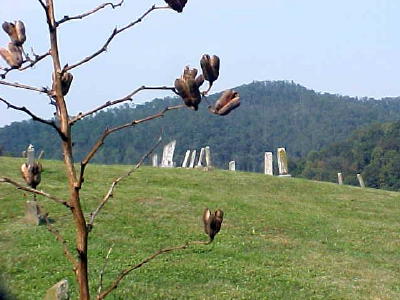
A quiet place above the West Fork River -
"While weeping o'er my silent grave,
my friend believe it to be true, that when you've toiled a few more days, here waits
a bed for you."
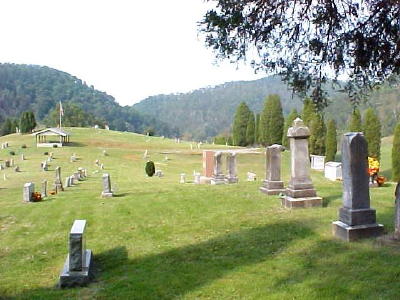
The Minnora (Prudence Chapel) Cemetery is home to a scattering of southern Calhoun's pioneers, some little remembered
By Bob Weaver 2003
Walking amongst the dead in the Minnora Cemetery on an autumn afternoon, it comes to mind how each one died, who was left behind and how little is remembered of them.
Imagination running free and gazing down the hill from the cemetery, one might see old Peter McCune, Peter Cogar, Adam O'Brien and Phillip Starcher coming down "The Fork" about 1800.
Soon to be followed by several families - Jarvis, Murphy, Starcher, Brannon, Truman, Hamilton, Chennoweth, Knotts, Tanner, Mollohan, Parsons, Wayne, and many others.
This burial ground situate on a hillside above the West Fork River, was earlier known as Prudence Chapel Cemetery, named after Prudence Arnold, wife of Confederate soldier and pioneer Absalom Knotts.
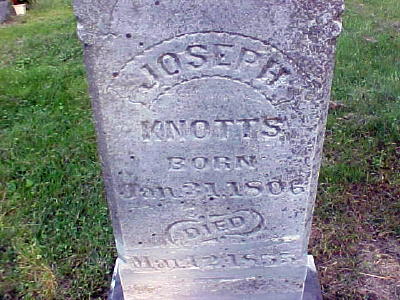
Early comer Joseph Knotts (1806-1855) was a member
of the Gilmer Co. Court
and married Mary "Polly" Arnold
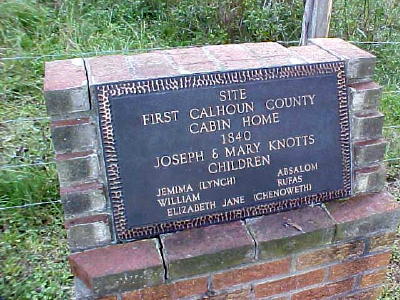
Joseph Knotts built a log cabin on the site of what is now the cemetery, where the Methodist Church held services in his home in 1836
Many have been resting beneath this pastoral setting, those early comers to the county, for quite a while now. "Here in the silent grave I lie, no more the scenes of life to try," says an epitaph. Old stones and flag rocks go back to the 1800's, with markers recognizing victims of the great wars, starting with the renegade rebels of southern Calhoun in the Civil War.
The cemetery is a "Who's Who" of southern Calhoun, names like Conley, Keith, Knotts, Eisman, Stalnaker, Proudfoot, Jarvis, Bailey, Parsons, Edgell, Brannon, Siers, Miller, White, Isenhart, Helmick, Douglas, Hicks, Keaton, Davisson, Mullins, Murphy, Metheney, Sharp, Hicks, Brannon, Mollohan, Starcher, Rogers, Jett, Truman, Boggs, Cogar, and many more.
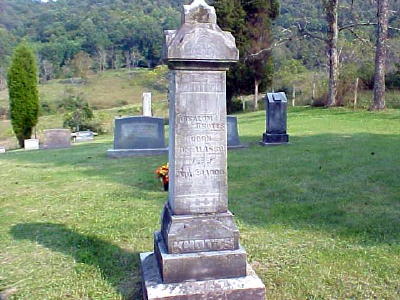
Absalom Knotts (1830-1900) married Prudence Arnold, he was a early political leader and sheriff, Confederate soldier taken prisoner in 1864 to the end of the war. Col. D. S. Deweese said of Knotts "War clouds settling dense amid heavy...men of progressive minds and active turns could not...remain silent and inactive...a man of marked ability, stirring qualities and a natural born leader"
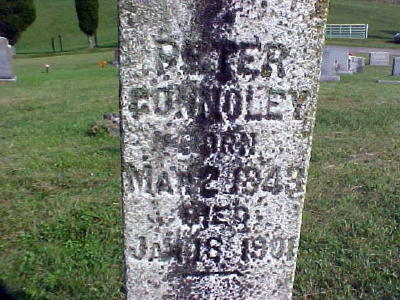
Peter Connolly rests here, the grandson of Dr. George Connolly and husband of Jane McCune, his grandfather settled on Siers Run about 1825
Many of Calhoun's surnames in the cemetery have disappeared from the census roster, to be replaced by moderns who are much more transient, moving from place to place, state to state.
Country people use to spend a lot of time remembering the deceased.
In my family of mountain folks, much time was spent on recalling how people died. Some called it "morbid detail." Over the years I have recorded such moments from the Village of Hur just to annoy future generations, such as their last words, their attitudes and how they looked. We always wanted to know how bad they looked, or what a great job the undertaker did to restore their handsomeness.
Sturdy folks on "The Fork" chose to live in an often unforgiving place, survival a constant struggle from year to year. Most had little flat land, and all understood how the tentacles of the forest were ever trying to reclaim their domain.
Several of Calhoun's early West Fork folks sought safety in the narrow hollers, relief from violent prejudice, with some being of Melungeon descent. Melungeons were a persecuted bunch of mixed-blood genealogy, native American, European, middle eastern and black .
They were widely mistreated by land owners on the eastern coast, and driven into the mountains of Virginia, Tennessee and Kentucky. My grandmother, Mary Virginia Riggs McCoy, referred to some of our family members as "black dutch," dark-skinned relatives who had European and middle-eastern features.
Because this genealogical pool did not fit a social niche, they were people without a home, rejected and discarded. Laws were drawn against them, some of which remained in place in Virginia and Kentucky into the 20th century.
The Melungeon story aptly explains why some of our early Calhoun settlers did not continue their journey westward, where you could find thousands of acres of farm-able flat land. They wanted a peaceful place, hidden from those who trespassed against them.
"The Fork" is ridden with pioneer stories and adventures, with a few of them recorded.
Many of the earlier settlers didn't want roads.
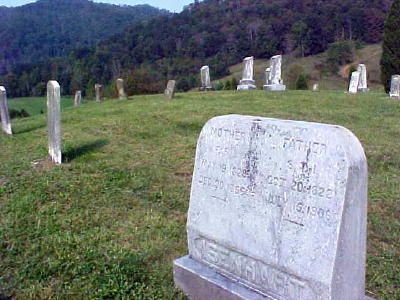
Old Samuel Isenhart (1922-1906), whose family name is gone from the county, served three years with the Rebs, was in 36 engagements and received "nine shots in his clothes"
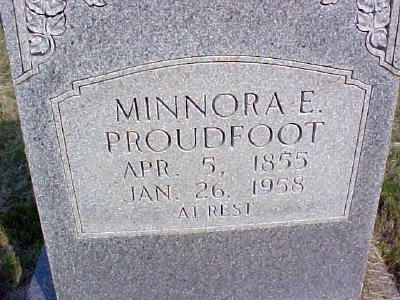
Minnora Knotts Proudfoot who died in 1958 at 103, was the daughter of Absalom and Prudence Arnold Knotts, and namesake for the Village of Minnora, honored during the Calhoun Centennial in 1956
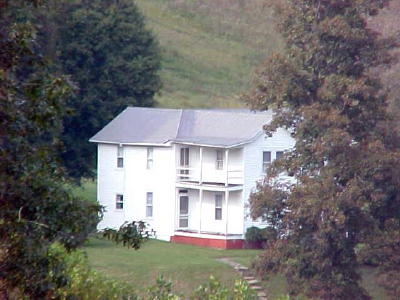
The Howard and Vena Knotts House on a nearby hill,
where current old-timer Eucle Knotts resided.
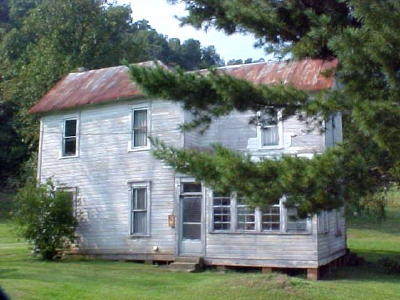
Harvey and Minnora Knotts Proudfoot place at entrance to cemetery of Route 16, later years known as Homer Witt home
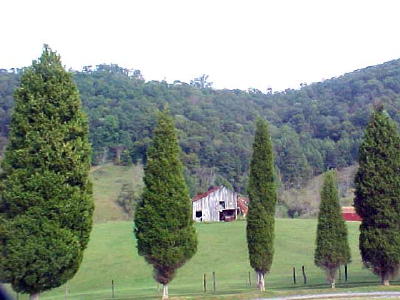
Remembering is "An array of legendary personages"
- George Bernard Shaw
"Let not Ambition mock their useful toil,
Their homely joys, and destiny obscure;
Nor Grandeur hear with a disdainful smile
The short and simple annals of the poor.
The boast of heraldry, the pomp of pow'r,
And all that beauty, all that wealth e'er gave,
Awaits alike th' inevitable hour.
The paths of glory lead but to the grave.
- Thomas Gray (1716-1771) Elegy Written in a Country Churchyard